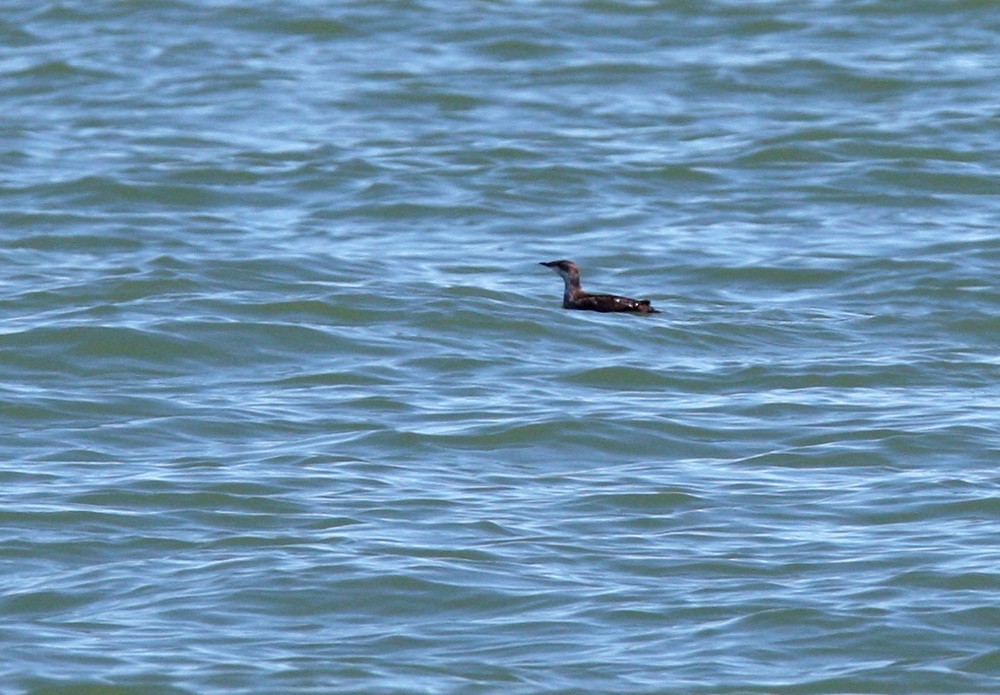Long-billed Murrelet
A species of Forest and Glacier Murrelets Scientific name : Brachyramphus perdix Genus : Forest and Glacier Murrelets
Long-billed Murrelet, A species of Forest and Glacier Murrelets
Botanical name: Brachyramphus perdix
Genus: Forest and Glacier Murrelets
Content
Description General Info
 Photo By Lars Petersson
Photo By Lars Petersson Description
The long-billed murrelet is a small (25 cm long), chunky auk with a slender black bill. It has pointed wings and plumage that varies by season. The non-breeding appearance is typically white underneath with a black crown, nape, wings and back. The breeding plumage is mainly brown, with pale feather edges giving a scaly appearance; the central underparts, normally below the surface on a swimming bird, are white. The long-billed murrelet is longer billed, slightly larger, and 20% heavier than the marbled murrelet, and has a white eye ring. In breeding plumage it shows a pale throat which is absent in marbled murrelet, and weaker scaling because of fewer rusty and buff markings. In winter, the long-billed murrelet lacks the white collar of the marbled. Measurements: Length: 25 cm Weight: 310 g Wingspan: 43 cm 
Size
23 - 41 cm
Life Expectancy
10 years
Nest Placement
Cliff
Feeding Habits
Long-billed Murrelet primarily consumes small fish, employing diving tactics from the water's surface. It demonstrates specialized predation techniques suited to its marine environment. Unique adaptations facilitate the capture of prey in deep and coastal waters.
Habitat
The habitat of long-billed Murrelet encompasses old-growth coniferous forests near coastal regions, with a preference for rocky terrains like slopes, cliffs, and boulder fields along the shore. These breeding environments are typically within 30 km of the ocean. During winter, long-billed Murrelet can be found in sheltered coastal waters and freshwater lake areas, notably near the Sea of Okhotsk and Northeast Asia.
Dite type
Piscivorous
General Info
Feeding Habits
Bird food type
Behavior
The long-billed murrelet feeds at sea principally on small fish, both in pelagic offshore areas (often associating with upwellings), and inshore in protected bays. It tends to migrate more than its closest relative the marbled murrelet. The breeding behaviour of the long-billed murrelet is very unusual. Unlike most other seabirds, it does not breed in colonies or even necessarily close to the sea, instead nesting in on branches of old-growth conifers. It lays one egg on a thick lichen- or moss-covered branch or hollow. The egg is incubated for a month, then the chick is fed for around 40 days until it fledges and flies unaccompanied to the sea. 
Species Status
The long-billed murrelet is considered globally threatened, having declined across its range over the last few decades. The biggest threat to the murrelet is the loss of the old growth forest to logging. Other losses can occur through entanglement in fishing gear. The bird could be threatened by the oil development of the Okhotsk and Bering Sea shelves. 

 Photo By Lars Petersson
Photo By Lars Petersson